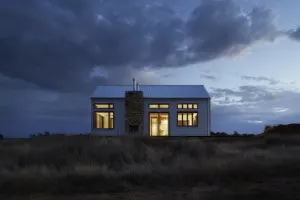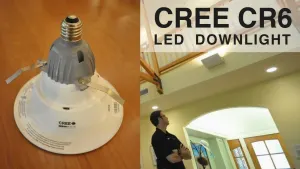You can build the most sustainable, robust, efficient home out there, but everything can fall apart with one simple element, lighting. Careful thought about function, fixtures, foot-candles and more needs to go into the design and layout of home lighting. We could write an encyclopedia on the subject, but here are the basics of lighting design that you need to understand for your home.
The Mighty Foot-Candle
A foot-candle is the basic measurement of lighting levels, which means how much light is reaching a surface (or illuminance if you want to get scientific). Foot-candles act as a measurement for lighting designers. Most home design doesn’t have the budget for a dedicated lighting designer, so accounting for lighting levels may depend on you.
Keep in mind, under-lighting and over-lighting a space causes fatigue and eye strain, making it a space no one wants to be in. Be sure to evenly light spaces that require a lot of focus for tasks such as kitchens and living rooms. For example, integrating task lighting into kitchen design by putting lighting under cabinets, goes a long way to keep users from chopping their fingers off.
Natural Light and Lighting Design
The key to excellent lighting design is getting a good mix of both natural and artificial light. Think about the quality of light coming from your windows. North-facing windows allow for an even amount of ambient natural light, while east and west-facing windows will bring your direct sunlight during certain times of day. South-facing windows are a great addition to any colder-climate design since they not only capture precious winter sunlight, but they also have the added bonus of bringing the warmth of the southern winter sun. Each should be in balance with lighting design.
Understanding Different Bulb Types
Lamps, commonly known as bulbs, are the light-emitting objects in lighting design. Different bulb types give off different types of light and are suitable for different purposes. Understanding which type of lamp gives off which type of light is essential in good lighting design.
- Incandescent bulbs are the most common types of lightbulbs. They can be used with a dimmer and are inexpensive but need to be replaced more often. Typically, they put off a warm and inviting light.
- Halogen bulbs are like incandescents, except their aim is to produce a color closer to natural daylight. They are slightly more energy efficient than incandescent bulbs but burn at a higher temperature. You need to install and replace these bulbs while wearing gloves. Halogens are best suited for recessed can lights, under-cabinet lights, and pendant lighting.
- Fluorescent and Compact Fluorescent bulbs (CFLs) cannot be dimmed and put out a flatter, harsh light. Fluorescents aren’t that common in homes unless you are lighting an attic, garage or basement. CLFs are highly energy efficient and last 10 times longer than incandescent bulbs. However, neither type of lamp can be put on a dimmer.
- Light-emitting diodes (LEDs) are all the rage these days. This is due to their long lifespan and high level of energy efficiency. They are best suited for directional lighting, such as task lighting since the light only emits in one direction. Newer technology has clustered the lights, but bulbs that produce more of a diffused light are available (expect to pay five to six times more for this luxury). LEDs are meant to be dimmed. They slowly lower in intensity over time. So, when you first install LEDs, you should dim them down, and as the LED lessens in intensity, you can turn the dimmer up to get a brighter light.
The Function of the Space
The function of a room dictates what type of lighting should be installed. For example, lighting in a bathroom should focus on the face, and keep in mind how the mirrors reflect the light. If you’re lighting a wardrobe or cupboard, you’ll want even lighting to avoid unflattering shadows and dark spots where items can get lost. Walls should be well-illuminated in hallways, so putting in wall washers is important.
There are several instances where users will choose to put their own lighting in a space (such as a desk task light). Be sure to provide ample outlets for different room types to account for lighting as well as other tasks (cleaning, TVs, appliances, etc.).
Selecting the Right Fixture
Lighting fixtures or luminaires will make or break a finished space. In order to select the perfect fixture for a room, you want to consider function (use of the room, dimming, switching, etc.), lamp type, lighting quality, and budget. These different types of lighting fixtures are suited to different moods, tasks, and functions.
- Ambient light refers to lighting that creates an overall soft glow in a room. These lights can be chandeliers, a series of cans, wall lights, track lights or any other lighting combination that seeks to create a feeling of natural, flat light.
- Task lighting refers to a smaller concentration of light to help you with a specific task such as cooking, reading or working. Pendants and under-cabinet lights make great task lights.
- Wall lights and sconces are great for illuminating walls in hallways and for accents, such as around a fireplace or column. They can be used to highlight architectural elements and brighten up hallways.
- Recessed cans and spotlights are common lighting types that act in two ways. Cans are great for creating ambient light as well as highlighting a certain area, such as an alcove or built-in shelving. Spotlights can act like accent lights to highlight art or other architectural elements.
- Under cabinet and vanity lights are built-in task lights that help add extra lighting in kitchens and bathrooms. These types of lights are also great in garages with built-in cabinetry.
- Accent lighting works to highlight a focal point by drawing your eye in. These lights add drama to the home. These lights are well-suited for bookcases, furniture, artwork, and architectural features. They act similar to spotlights but are mounted on the wall instead of the ceiling.
- Pendants and track lights can work in tandem to create a space that’s functional and visually appealing. The combination works great over kitchen islands or in a home office.
- Chandeliers are a great addition to any space with taller ceilings. They draw the eye down and create a focal point in a room. These lights can act as ambient light.
Switching Design
Lastly, in order to create a beautifully lit home, consider how the user will access the lighting. The last thing you want is to have to go deep into a room to switch a light on. Rooms with multiple access points should have multiple switches. Think about regular routines in a home, such as waking up and going to work, heading to bed and checking that the doors are locked or moving through a kitchen space with a load of groceries. Place switches where it’s convenient for users.
If you plan on using LEDs or seek to create a mood (in a den, dining room or living room) consider installing dimmers. This will allow users to set the mood or utilize the unique properties of LEDs.
Overall good lighting design equates to a home people want to be in. It elevates the living experience and provides for a better-built space. Great lighting design balances user needs with aesthetics, natural light, energy efficiency, and budget.

 Share on facebook
Share on facebook Tweet
Tweet Email
Email Share on Linkedin
Share on Linkedin










